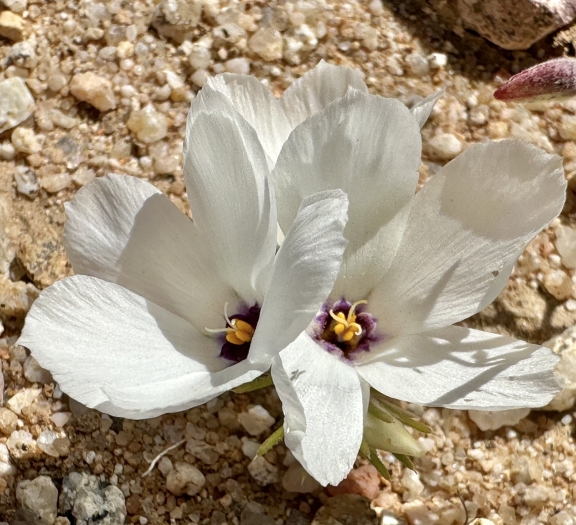Sandblossoms
(Linanthus parryae)
Sandblossoms (Linanthus parryae)
/
/

Henrik Kibak
CC BY 4.0
Image By:
Henrik Kibak
Recorded By:
Copyright:
CC BY 4.0
Copyright Notice:
Photo by: Henrik Kibak | License Type: CC BY 4.0 | License URL: http://creativecommons.org/licenses/by/4.0/ | Rights Holder: Henrik Kibak | Publisher: iNaturalist | Date Created: 2023-04-20T22:24:43Z |
























Estimated Native Range
Summary
Linanthus parryae, commonly known as Sandblossoms, is an annual herb native to various habitats in California, including the Central Valley of California, the Sierra Nevada foothills, and the Mojave Desert. It is particularly adapted to sandy or gravelly soils in open areas such as desert washes, chaparral, and open woodlands. The plant typically grows to a height of 4-12 inches (10-30 cm) and produces short stems surrounded by hairy, needle-lobed leaves. During its flowering season from March to June, Sandblossoms produce clusters of funnel-shaped flowers about a centimeter wide. The flowers are notable for their color variation, ranging from white to blue/purple, with the frequency of color types influenced by genetic drift and natural selection.
Sandblossoms are valued for their delicate, showy flowers and are often used in wildflower mixes for xeriscaping and naturalistic garden settings. They are drought-tolerant and require minimal maintenance, making them suitable for low-water gardens. In cultivation, they prefer well-drained soils and full sun exposure. While they are not commonly used in large-scale landscaping, their unique pollination ecology and genetic variability make them a subject of interest for scientific study and conservation. Potential problems include susceptibility to root rot in poorly drained soils.CC BY-SA 4.0
Sandblossoms are valued for their delicate, showy flowers and are often used in wildflower mixes for xeriscaping and naturalistic garden settings. They are drought-tolerant and require minimal maintenance, making them suitable for low-water gardens. In cultivation, they prefer well-drained soils and full sun exposure. While they are not commonly used in large-scale landscaping, their unique pollination ecology and genetic variability make them a subject of interest for scientific study and conservation. Potential problems include susceptibility to root rot in poorly drained soils.CC BY-SA 4.0
Plant Description
- Plant Type: Herb
- Height: 0.5-1 feet
- Width: 0.5-1 feet
- Growth Rate: Rapid
- Flower Color: Blue, Purple, White
- Flowering Season: Spring
- Leaf Retention:
Growth Requirements
- Sun: Full Sun
- Water: Low
- Drainage: Fast
Common Uses
Low Maintenance, Rock Garden
Natural Habitat
native to various habitats in California, including the Central Valley of California, the Sierra Nevada foothills, and the Mojave Desert
Other Names
Common Names: Parry’s Linanthus
Scientific Names: , Linanthus parryae, Dactylophyllum parryae, Gilia kennedyi, Gilia modesta, Gilia parryae, Gilia parryae var. modesta, Navarretia parryae,
GBIF Accepted Name: